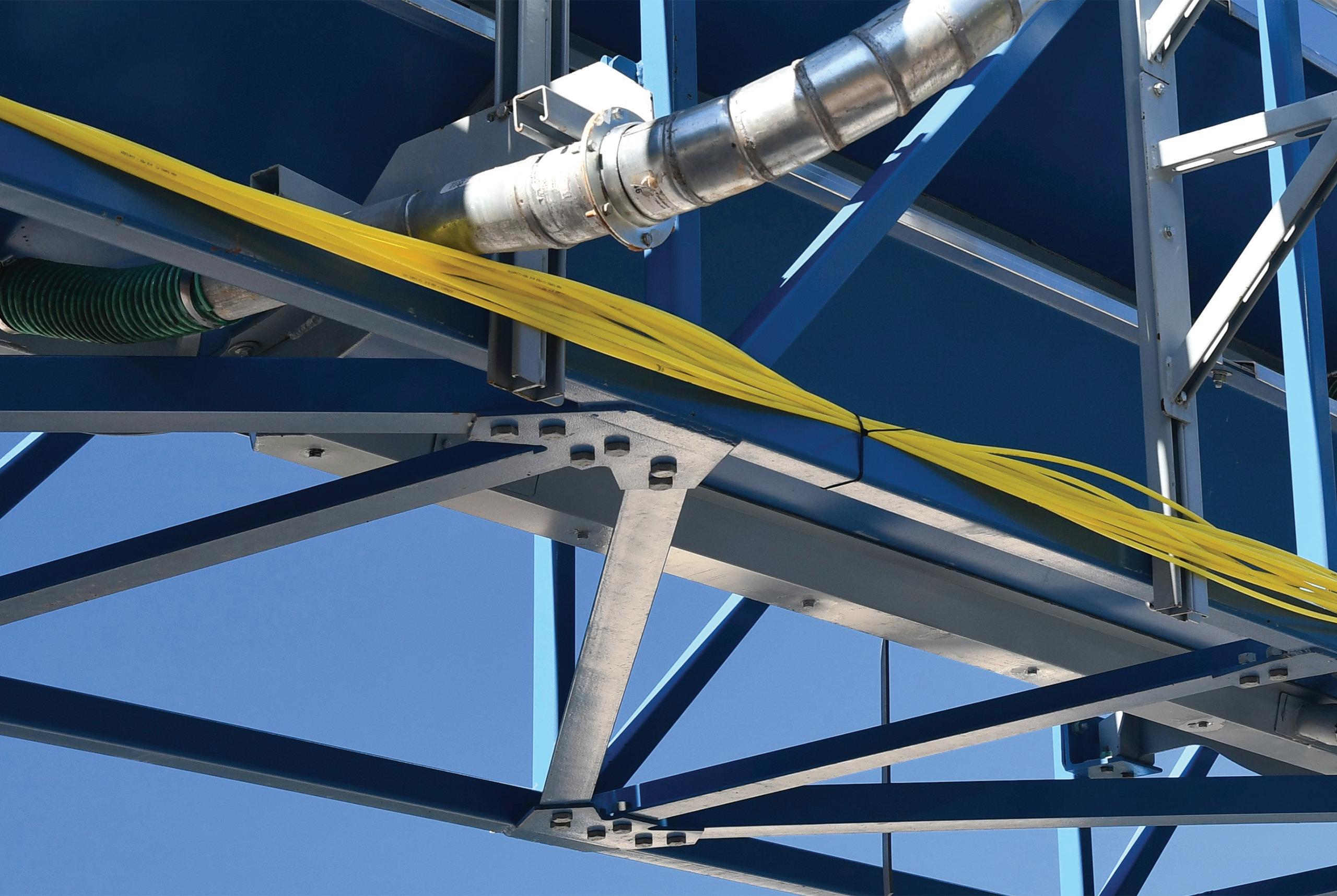
11 minute read
RNG
PHOTOS: CR&R ENVIRONMENTAL SERVICES
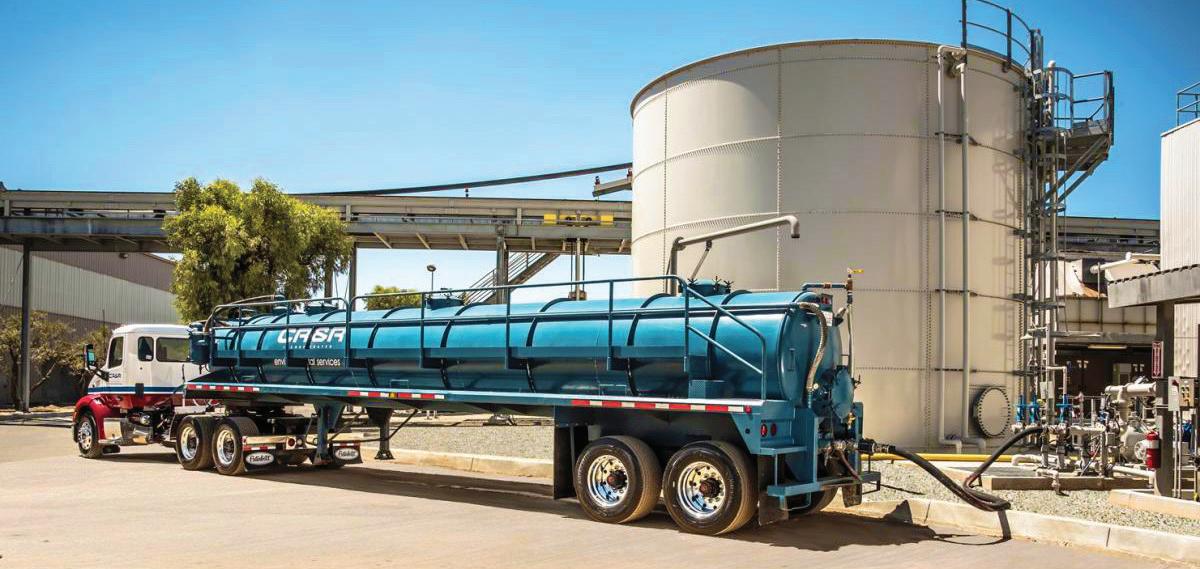
RNG REVOLUTION
The North American renewable natural gas industry has boomed over the past decade and potential remains vast. BY ANNA SIMET
As unpresented wildfires ravage California—shattering records of total acres of land burned by more than double, and by early October, surpassing 4 million acres just this year—discussions of climate change mitigation efforts are becoming louder and more pressing than ever. Particularly for those feeling the heat when it comes reducing carbon footprints, interest in renewable natural gas (RNG) as an alternative vehicle fuel is an all-time high, and for good reason. Not only does it meet the most stringent emissions requirements, but for utilities and companies at which large vehicle fleets are essential for operating, making the switch is relatively easy and inexpensive. Announcements of transitions for large vehicle fleets are made almost daily—for example, in early September, the New York Metropolitan Transportation Authority inked a deal with Clean Energy Fuels Corp. to fuel the MTA’s 800 transit buses with RNG. Less than a week later, CEFC announced that, in just a 45-day period, it had made new and extended deals for the supply of more than 20 million gallons of RNG for municipal and refuse vehicle fleets and fueling stations across the country. Coincidentally, California happens to be the heart of North America’s RNG boom, where conventional on-road natural gas is being rapidly displaced by RNG. In 2019, 77% of all on-road fuel used in natural gas vehicles in the state was RNG, according to the Coalition for Renewable Natural Gas, and its use as a transportation fuel has increased 210% in the past five years. The Low Carbon Fuel Standard has proven to be a powerful accelerator of RNG production and use, as RNG fuel use in natural gas vehicles across the rest
The Biogas Use Enhancement Project in Boulder, Colorado, converts biogas from wastewater digesters into RNG for vehicle fuel.
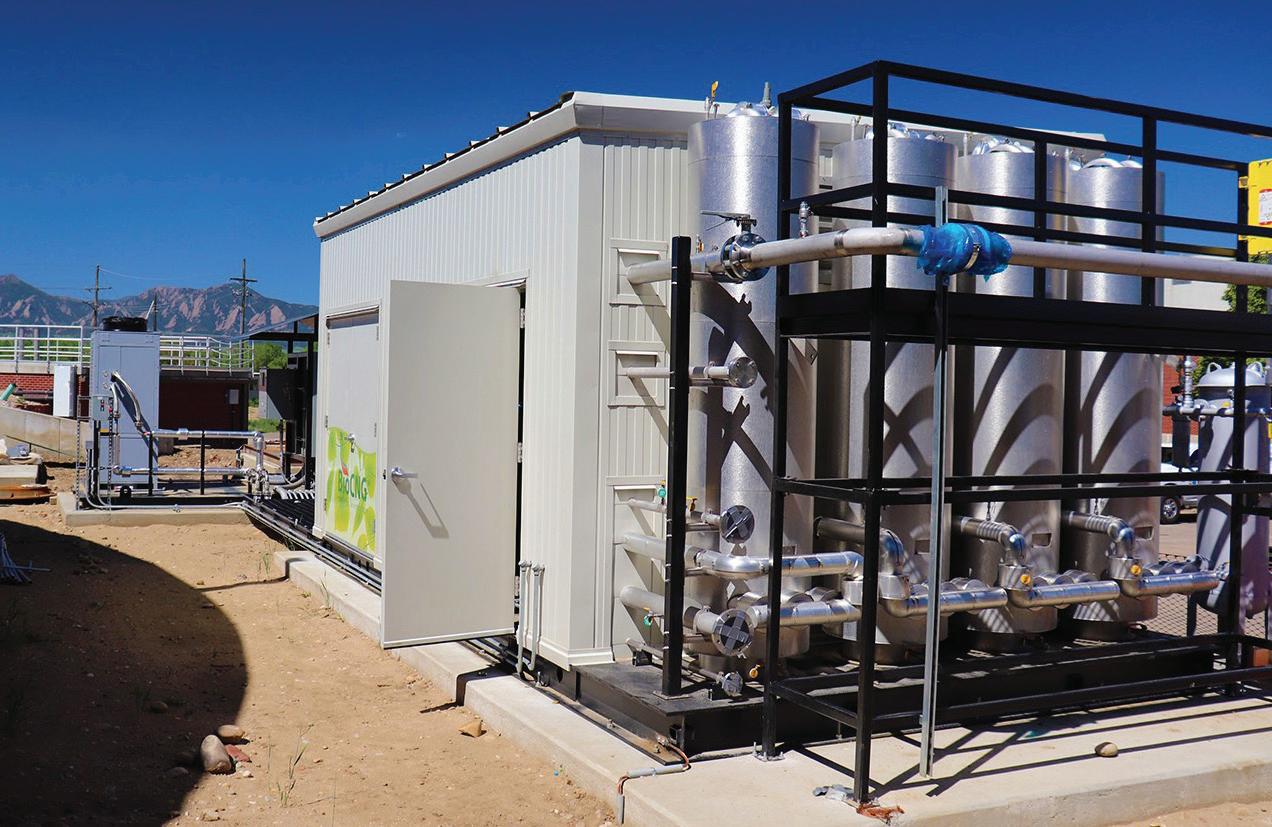
PHOTO: CGRS
of North America in 2019 was at 39%. A recent study by clean technology consulting firm Gladstein, Neandross & Associates revealed that more than $1 billion is being invested in California to increase the state’s RNG supply, mostly private investments. By January 2021, the report predicts, 160 RNG production facilities will be operational within the state. As of April, there were 110 operating RNG production facilities across all of North America.
Further illustrating the industry’s incredible momentum dur-
At the city of Boulder's Biogas Use Enhancement Project, Tetra Tech installed its proprietary BioCNH gas conditioning system, replaced the existing cogeneration engines and heat recovery systems, and upgraded the hydronic system used to heat the digesters and other buildings. PHOTO: TETRA TECH
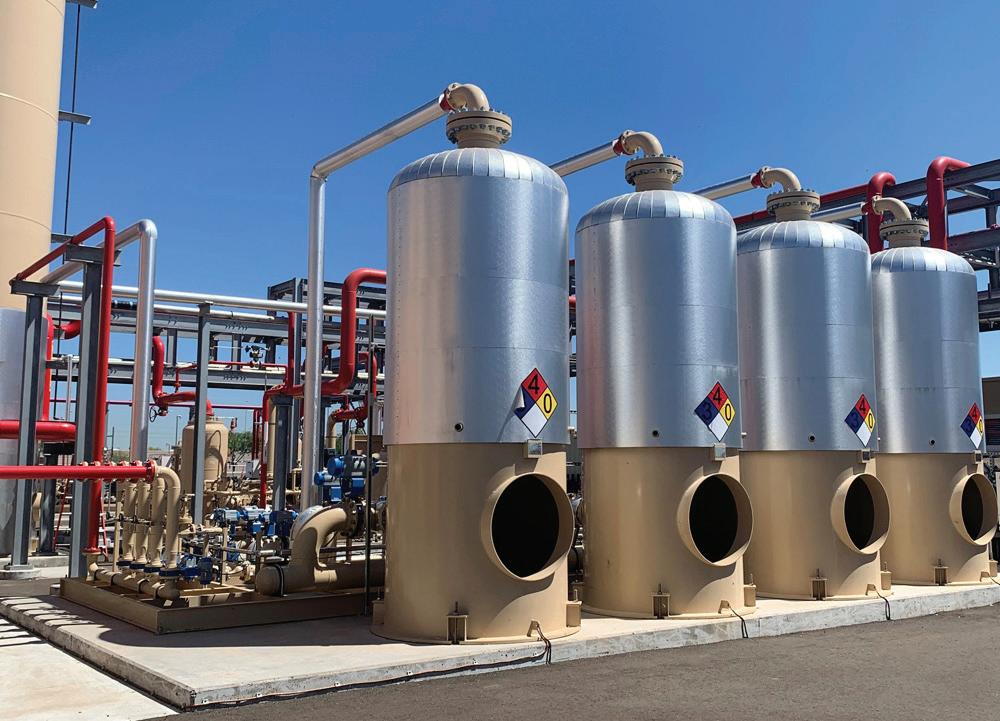
ing the past decade, Johannes Escudero, executive director of the RNG Coalition, points out that the first RNG project was developed nearly 40 years ago at the Fresh Kills Landfill on Staten Island, New York, and from then until 2011, only 30 additional RNG projects were developed. “That’s an average of just one project per year over 30 years,” he says. “But between 2011 and 2015, building upon our policy advocacy successes, the industry quadrupled its annual project development average from 1 to 4. In 2015, we announced an objective to double the number of projects from 47 to 100 by 2025. We surpassed our 100 project goal five and a half years ahead of schedule, in July 2019.”
And over just the past 12 months, Escudero says, the North American RNG industry has developed more projects than it did during its first three decades of existence, between 1982 and 2011. “That said, we are only proud to the extent we are looking back, and our focus is fixed on the future and our recently announced Sustainable Methane Abatement & Recycling Timeline (SMART) Initiative, an initiative to capture and control the methane from more than 43,000 aggregated organic waste sites in North America by 2050. We are currently working with our membership developing an action plan to achieve this that includes benchmarks for 2030 and 2040.”
As for bright spots in further building out the industry, Escudero says landfills still represent the largest, stationary feedstock, so it continues to be the lowest-hanging fruit from a development standpoint. “However, due to the environmental and economic incentives included in recent policies, there is an increased effort to develop RNG production facilities from livestock waste (primarily dairy manure) and wastewater treatment facilities,” he says. Landfill Gas to RNG
Currently, there are roughly 636 on-site landfill energy generation projects in North America, with 450 additional project candidates, according to the RNG Coalition.
The U.S. EPA’s Landfill Methane Outreach Program, which tracks projects via its Landfill and LFG Energy Project database, indicates landfill-gas-to-energy projects are operating in 48 states, roughly 75% of which generate electricity. Breaking down numbers for the U.S., there were roughly 399 operational LFG-to-electricity projects operating in August, 99 direct-use projects, 58 RNG pipeline injection and nine RNG local use, according to LMOP data.
For project partners Fortistar and Rumpke Waste & Recycling, RNG represents major investments in the waste management and renewable fuel sectors. A joint project under construction at the Noble Road landfill in Shiloh, Ohio, marks the fourth of 12 new Fortistar RNG projects totaling nearly $500 million in investments over the next three years.
The $33 million Noble Road Landfill project will capture and upgrade landfill methane into RNG to be distributed through Chesapeake utility Corp. affiliate Aspire Energy’s pipelines. The RNG will be dispensed at natural gas vehicle fueling stations, totaling 6.9 million gallons of gasoline gallon equivalents per year, enough to fuel 725 trucks.
Recently beginning operations is the South Shelby Landfill RNG project, a three-way partnership of Republic Services, Aria Energy and BP. The 4,000 MMBtu-per-day facility marks Aria and BP’s fourth RNG project at a Republic Services Landfill and is one of 69 Republic landfill gas projects. The facility can produce the equivalent of nearly 33,250 gallons of gasoline daily. Aria operates the project, processing and purifying biogas from the landfill into RNG, with BP transporting the RNG into the interstate natural gas pipeline to market to customers.
Wastewater to RNG
Because wastewater treatment plants (WTTPs) generate biogas with high methane content and very low nitrogen and oxygen, they are attractive candidates for RNG projects. Some wastewater treat-
Operational LFG Energy Projects by Type (August 2020)
SOURCE: US EPA LMOP
Direct Use: 99
RNG / Pipeline Injection: 58 RNG / Local Use: 9 Electricity: 399
Snapshot of Biogas in the US
SOURCE: AMERICAN BIOGAS COUNCIL

According to the American Biogas Council, the U.S. has over 2,200 sites producing biogas in all 50 states. This includes 250 anaerobic digesters on farms; 1,269 water resource recovery facilities using an anaerobic digester with 860 using the resulting biogas; 66 stand-alone systems that digest food waste; and 652 landll gas projects. The council estimates there are nearly 15,000 sites ripe for development today.
ment facilities treat sewage sludge on-site using AD, while some send it to other facilities for processing. Approximately 13 WWTPs had operating RNG projects in 2019, according to LMOP.
That number has increased, as Tetra Tech Inc., CGRS Inc., and the city of Boulder have recently completed what has been dubbed the Biogas Use Enhancement Project. A main impetus in moving forward with the project was that facility’s cogeneration system, which has been replaced with a new digester gas upgrading system, was at the end of its useful service life. Western Disposal has agreed to purchase the RNG to fuel a portion of its vehicle fleet of approximately 31 trucks, according to the city, which plans to take advantage of renewable identification number (RIN)-earning op-

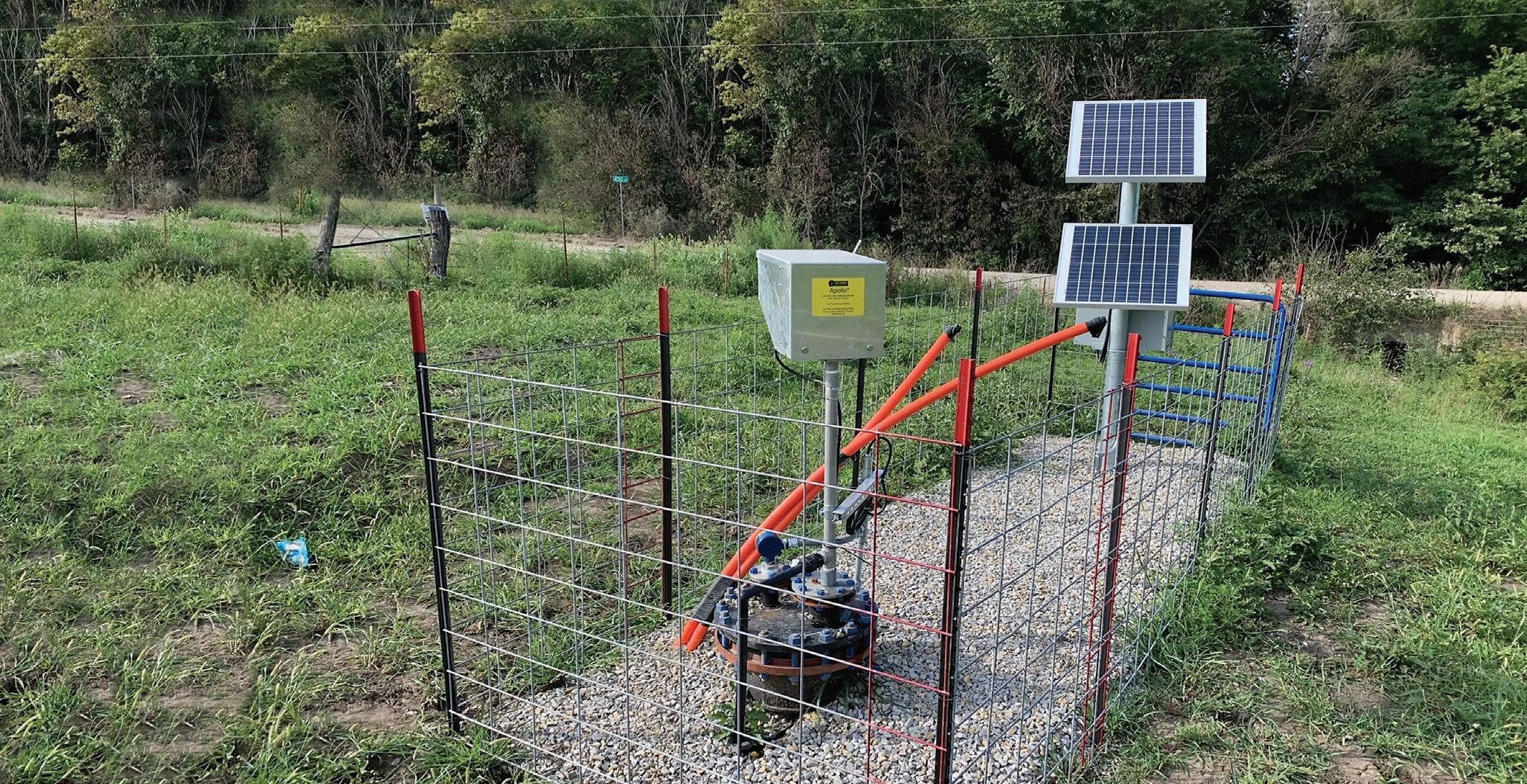
An Elegantly Simple Biomass Sump Pump
Any Composition or Viscosity, Less Maintenance, Lower Price


Reliable, non-polluting and affordable, Apollos are ideal for condensate sump and a range of biomass applications. Flows range to 3,800 gallons per day for solar models, 4,300 gpd for AC Electric.

WHY APOLLOS? • Rugged • Few moving parts • Above-grade mounting • Safer, easier servicing …Because they work
portunities under the U.S. Renewable Fuel Standard, potentially driving a return on investment in the next 10 to 15 years.
Another example of a new WWTPto-RNG facility is the city of Phoenix 91st Avenue Wastewater Treatment Plant. There, Ameresco designed, built, owns and operates the largest wastewater treatment biogas-to-RNG facility of its kind in the U.S. The plant, capable of processing raw biogas at a rate of 3,250 standard cubic feet per minute, sends RNG through a three-mile RNG pipeline connected to an interstate natural gas pipeline. The RNG is sold on the open market as vehicle fuel under the RFS. The project is expected to generate $1.2 million in annual revenue, to be shared among the cities that jointly own the wastewater treatment plant.
Manure to RNG
According to the EPA AgSTAR project database, as of March 2020 there were 255 operational digester projects utilizing livestock manure in the U.S. Nearly 80 percent of these are at dairy farms, 14 percent are at hog farms, and the remaining utilize mix of animal manure, including poultry and beef cattle. Most of these projects generate electricity—roughly 84 percent—and many also recover waste heat for cogeneration. More than 20 manure-based digester projects are currently producing RNG from their biogas, with a variety of RNG end uses including electricity, vehicle fuel and pipeline gas. The RNG Coalition asserts there are 8,000 large farms and dairies are potential candidates for ag waste/manure-to-RNG production.
Perhaps one of the best-known projects is Monarch Bioenergy, a joint project between Roeselein Alternative Energy and Smithfield Hog Production. It has the purpose of initaiting RNG production across all Smithfield’s hog farms in Missouri, resulting in approximately 1.3 million dekatherms of RNG annually, the equivalent to eliminating 130,000 gasoline vehicles.
Smithfield is also involved in RNG project through its joint venture with Dominion Energy, Align Renewable Natural Gas. Located in Duplin and Sampson counties in North Carolina, the project will generate enough energy to power more than 3,500 homes annually upon completion. As part of the initiative, RNG production will be installed across as many as 19 area farms. The project is modeled after the Optima KV project, which captures biogas on five Smithfield contract farms in North Carolina, and similar projects on Smithfield farms in northern Missouri and Utah.
Another notable project is that of Calgren Dairy Fuels. Early this year, Calgren and Southern California Gas Co. announced that four additional Central Valley dairies have begun sending methane produced from cow manure to Calgren's biogas-to-RNG operation in Pixley, California, for injection into SoCalGas' system. The Calgren cluster project now processes manure from more than 66,000 cows at 10 area dairy farms. The additional dairies are projected to nearly double the amount of RNG produced at the facility. Food Waste to RNG
The EPA reported in its 2018 AD survey results that of the 43 stand-alone organic waste-using facilities that disclosed their biogas end use, just five produce RNG for company vehicles or for sale to other customers, while none provide RNG for pipeline injection.
One of the relatively few food wasteto-RNG projects is CR&R Environmental Services’ AD project in Perris, California, which uses residential and commercial yard and food waste. Though the project has an initial maximum capacity of 83,600 tons per year, additional phases are planned to build out capacity to four times that amount. In 2018, CR&R began injecting RNG into the SoCalGas fossil natural gas system via a newly built 1.4-mile pipeline, which CR&R extracts the RNG back out of to fuel about 400 of its waste-hauling trucks.
Moving Forward
As for North American industry growth moving forward, Escudero says that first and foremost, public policies are driving industry growth. “Public policies influence markets, markets drive demand,” he says. “Additionally, as the general public becomes better educated about the environmental and economic benefits of RNG— including recognition of RNG as a waste management solution for organic waste materials—the call for public officials to support pro-RNG policies like the RFS, LCFS, and state renewable portfo-
lio standards increases.”
The calendar year is nearing a close, Escudero adds, and despite the uncertainty the past year has brought, the future for RNG looks bright. “This uncertainty—politically, socially, environmentally, economically—is likely to continue into the foreseeable future,” he says. “That said, we are eternally optimistic. We consider ourselves very fortunate as an industry to provide energy as an essential service. As the industry advocate and representative, we are grateful for the personnel, systems and practices, relationships and membership support that have enabled us to advance our mission, even during these unpredictable times.”
Author: Anna Simet Editor, Biomass Magazine 701-738-4961 asimet@bbiinternational.com

